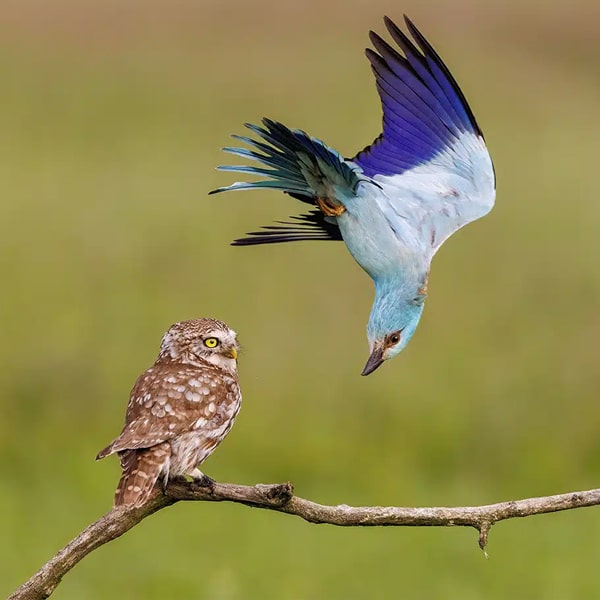
Peringuey's adder (Bitis peringueyi)
This post may contain affiliate links. If you make a purchase, My Modern Met may earn an affiliate commission. Please read our disclosure for more info.
Like many people, photographer Marisa Ishimatsu was once afraid of snakes. But after a friend in college opened her eyes to the beauty of these reptiles, her fear dissipated and transformed into a creative passion. She began actively seeking out and photographing snakes over a decade ago, and her latest adventure brought her to Africa. There, together with fellow photographer Thor Hakonsen and several others, she set out on a mission to photograph all six species of adder found in Namibia.
The group spent 10 days scouring Namibia for these snakes. Thanks to a local guide's help, the group eventually tracked down and photographed all six species. This includes the Peringuey's adder, a sidewinding snake that expertly camouflages itself in the sands of the Namib Desert, and the Namaqua Dwarf adder, which is the world's smallest venomous snake.
For Ishimatsu, it's not only about photographing the animals, but exposing others to the ordinary habits of these snakes. “I don't like to sensationalize them to something more frightening or more dramatic than they are,” she tells My Modern Met. “Snakes are just like us—trying to live in the environment they find themselves in. Through my photography, I'd like to help people view snakes in the same way that many of us now view many of our once-predators like wolves, lions, and tigers: with awe, respect, and acknowledgment that these animals have just as much right to live their lives as we do.”
She also hopes that people will look beyond their fears and take the time to appreciate the adaptability of these reptiles. Ishimatsu notes that many people have responded to her desert photos by stating, “I'll never step in the sand again!” Instead, she'd prefer that people take the time to look at how these snakes work hard to survive in a difficult environment.
“Peringuey's adders are perfectly adapted to their windblown, sandy habitats,” she explains. “Their eyes on the top of their head and their reinforced nostrils have evolved to be the only portions of the snake exposed while the rest is buried. They sometimes wave their tail tip above the sand to lure a hungry lizard to come close and become a meal itself. For water, they drink condensed fog off their coils.”
And, as much as humans often fear these types of snakes, Ishimatsu is quick to remind us that we are the last things on their minds. “They move across the dunes in a beautiful sidewinding motion, seeming to effortlessly dance across the loose sand. They are incredible animals who would like nothing more than to be left alone in their dunes.”
Ishimatsu's trip sparked a love for Namibia and she'll be returning in 2024 to lead a photography tour with The Naturalist Collection. To see more of her wildlife and snake photography, follow Ishimatsu's work on Flickr. She also has select images available for purchase on Etsy.
Photographer Marisa Ishimatsu spent 10 days in Namibia tracking down snakes—specifically, six species of adders.


In the end, she was able to document all of the snakes she'd come to Africa to find.

Desert mountain adder (Bitis xeropaga)

Many-horned adder (Bitis cornuta)

Many-horned adder (Bitis cornuta)

Horned adder (Bitis caudalis)
These include the Peringuey's adder, which expertly blends itself into the sand.

Peringuey's adder (Bitis peringueyi)

Peringuey's adder (Bitis peringueyi)

Peringuey's adder (Bitis peringueyi)
As well as the Namaqua Dwarf adder, which is the world's smallest venomous snake.

Namaqua dwarf adder (Bitis schneideri)





















































































